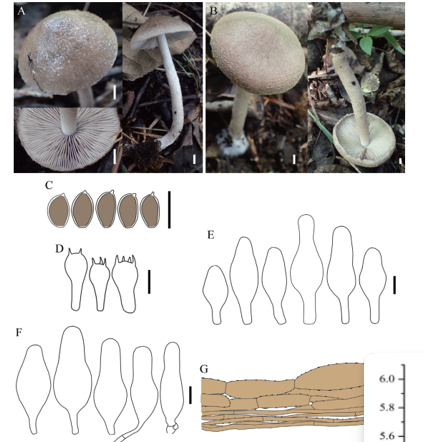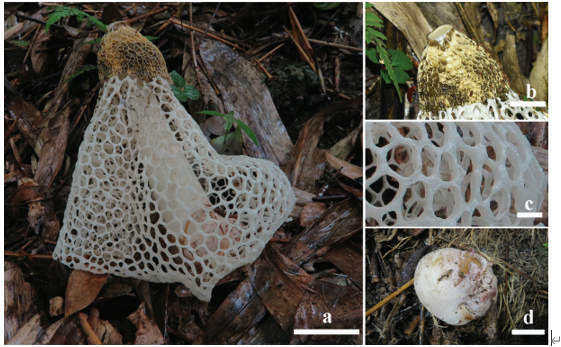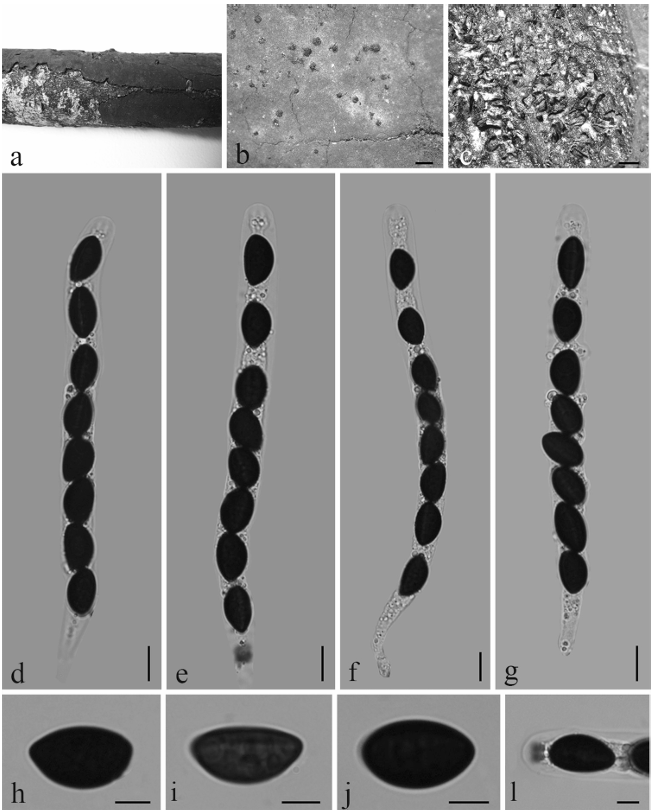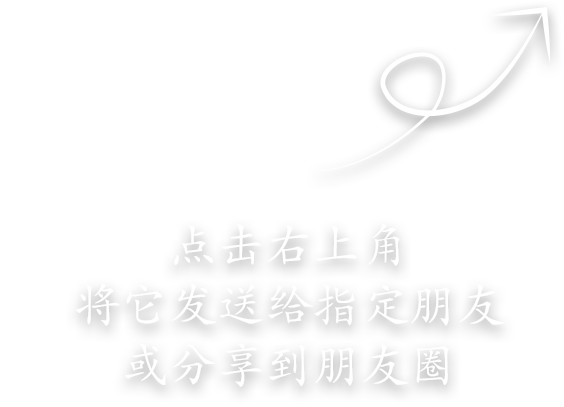Epicoccum endophyticum N.I. de Silva & Lumyong, sp. nov. 2021
MycoBank Index Fungorum number: IF556133; Facesoffungi number: FoF09491
Holotype: MFLU 20–0584Morphological description
Sexual morph:
Asexual morphs: Conidiomata sporodochial, solitary or aggregated, semi–immersed or superficial and brown covered with hyphal growth. Conidiophores micronematous, inconspicuous. Conidia 10–15 × 8–10μm (x= 13 × 9 µm), brown to dark brown, mostly ellipsoid, rarely globose to subglobose, verrucose and sometimes with a basal cell.
Cultures: Colonies on PDA reaching 25 mm diameter after 7 days at 25°C, colonies circular, margin entire, velvety appearance with cream and white mycelia, colony from above: white and light brown; reverse: brown.
Habitat: : healthy leaves of Magnolia candolli (Magnoliaceae).
Distribution: CHINA, Yunnan Province, Xishuangbanna.
GenBank Accession: (S3) LSU: MW209730, ITS: MW219739, RPB2: MW240860; (MT5) LSU: MW209729, ITS: MW219738, RPB2: MW240859.
Notes: According to the phylogeny, Epicoccum endophyticum is closely related to the exneotype of E. oryzae (CBS 173.34) with 56% ML and 0.80 BYPP support (Fig. 6). A comparison of the RPB2 gene region of E. endophyticum and ex-neotype of E. oryzae (CBS 173.34) reveals 15 base pair differences (2.5%) across 600 nucleotides. Ito & Iwadare (1934) introduced E. oryzae from rice grains causing “red blotch” disease in Hokkaido, Japan. Hou et al. (2020) proposed the ex-neotype (CBS 173.34) of E. oryzae that were deposited in CBS collection by the original author of the species. Epicoccum oryzae produced sporodochia consist of globose, subglobose, or pyriform, granular, 9.9–23.1 × 6.6–16.5 μm conidia. Epicoccum endophyticum differs from E.oryzae in having ellipsoidal, smaller conidia (10–15 × 8–10 μm), whereas E. oryzae has subglobose-pyriform, larger conidia (9.9–23.1 × 6.6–16.5 μm) (Ito & Iwadare 1934). In addition, Epicoccum oryzae has been recorded as a pathogen on rice grains in Japan, while E. endophyticum was recorded as an endophyte from healthy leaves of Magnolia candolli in China. Therefore, we introduce Epicoccum endophyticum as a new species from China based on both morphology and phylogeny.
Reference: de Silva NI, Maharachchikumbura SSN, Thambugala KM, Bhat DJ, Karunarathna SC, Tennakoon DS, Phookamsak R, Jayawardena RS, Lumyong S, Hyde KD 2021 – Morphomolecular taxonomic studies reveal a high number of endophytic fungi from Magnolia candolli and M. garrettii in China and Thailand. Mycosphere 11(1), 163–237, Doi 10.5943/mycosphere/12/1/3
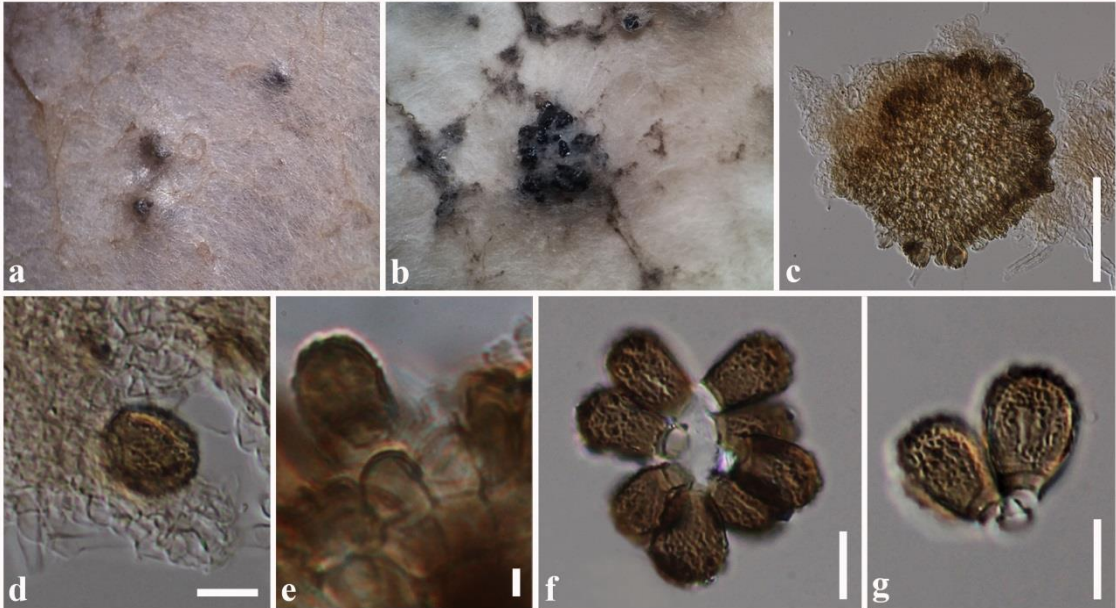
Epicoccum endophyticum (MFLU 20–0584, holotype). a, b Sporodochia on PDA. c Section of sporodochium. d Conidia with mycelia. e Conidiogenous cells with attached conidium. f, g Conidia. Scale bars: c = 50 μm, d–h = 10 μm.



